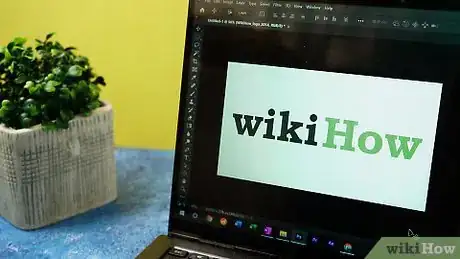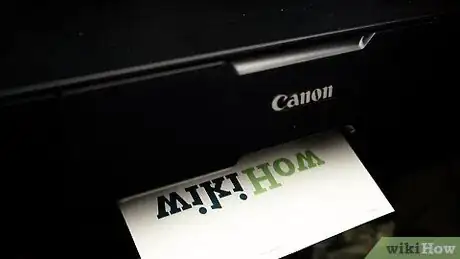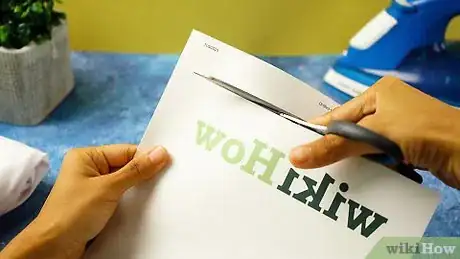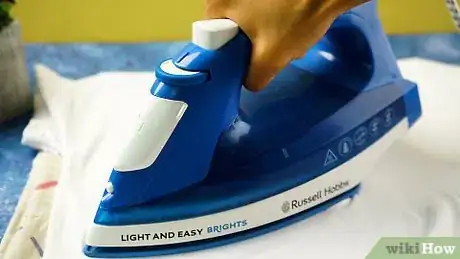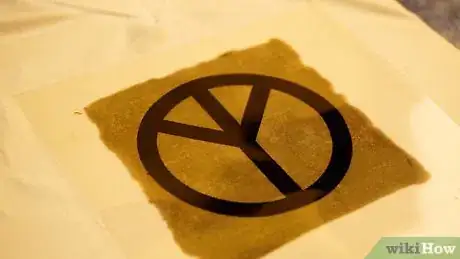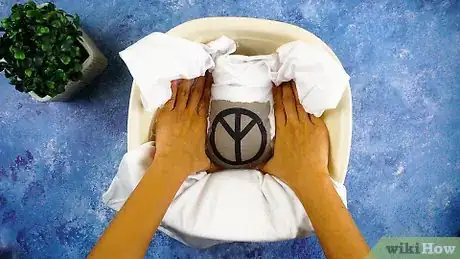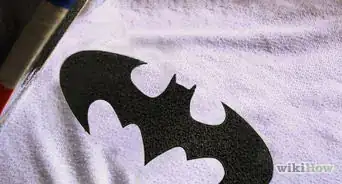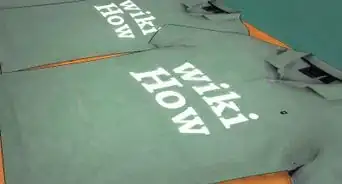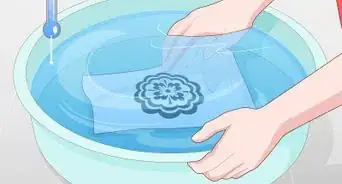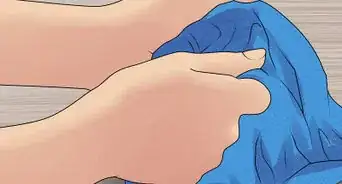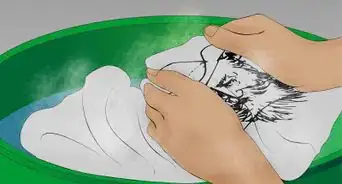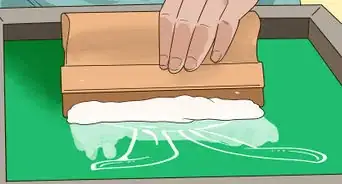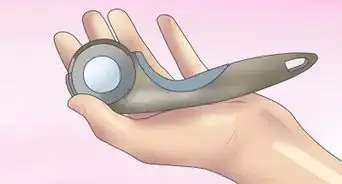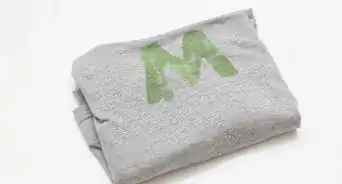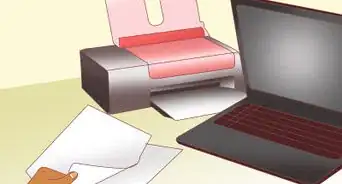This article was co-authored by Joy Cho. Joy Cho is the Founder and Creative Director of the lifestyle brand and design studio, Oh Joy!, founded in 2005 and based in Los Angeles, California. She has authored six books and consulted for creative businesses around the world. Joy has lectured on business, leadership, and entrepreneurship at conferences and companies such as AltSummit, Pinterest, Target, and Hallmark, while her home and studio have been featured in magazines such as House Beautiful, Parents, and Domino. She has also been named one of Time's 30 Most Influential People on the Internet multiple times and has the most followed account on Pinterest with more than 14 million followers.
There are 7 references cited in this article, which can be found at the bottom of the page.
wikiHow marks an article as reader-approved once it receives enough positive feedback. This article received 19 testimonials and 90% of readers who voted found it helpful, earning it our reader-approved status.
This article has been viewed 1,640,458 times.
Printing designs onto T-shirts is an involved process that allows you to design your own T-shirts. While the printing methods might feel tricky at first, it should get easier once you've had some practice. Transfer printing is the best choice for a one-time project. Screen printing requires more specialized supplies but allows you to print many shirts from a single image. Inkodye is another option for quick one-time printing that's more substantial than iron on prints.
Things You Should Know
- Grab t-shirt transfer paper, scissors, a pillowcase, a clothing iron, and a t-shirt. Place the pillowcase flat on a hard surface, laying your tee on top.
- Print your design on transfer paper, press it to your tee, and iron over the message for ~1 min, or as long as your paper's instructions suggest.
- Or, print using an Inkodye. For this, you'll need to place a negative onto your dyed t-shirt, then lay it in the sun for ~10 minutes.
Steps
Printing on Transfer Paper
-
1Purchase T-shirt transfer paper. You can use transfer paper to do dye sublimation printing, which is one of the most popular methods. Special heat transfer paper can be found anywhere you can buy stationery or printer paper. There are two types of transfer paper, one suitable for white or pastel shirts, and one suitable for all darker colors.
- Dye sublimation printing means printing out the image and then using heat to infuse the image onto a surface, in this case your own T-shirts.
- Most transfer paper is the same size as your regular printer paper (Letter size or A4 depending on your country). Before purchasing an unusual size, make sure your printer can handle it.
- Light transfer paper is used for light or white shirts.[1]
- Dark transfer paper is used for any shirt that is darker.
Tip: This printing method is fairly easy. Your inkjet printer will do most of the work for you!
-
2Select a high quality image for your T-shirt design. You can use any image saved on your computer.
- If you only have the image in a physical form, scan it and save it to your computer as a jpeg file. Alternatively, take a photograph and transfer it to your computer.
- If you're going to be selling the shirts through your own online T-shirt business, only use your original designs or photos.
Advertisement -
3Mirror the image for light-colored shirts. Transfer paper for light-colored paper creates a mirror image on your shirt. Look for a "reverse" or "mirror" setting in the print options window, or flip your image in MS Paint or another image editing program.[2] If you skip this step, all text in your design will be unreadable.
- Do not reverse the image if you are using transfer paper for darker shirts. This type of transfer paper transfers the image exactly as it appears.
- If you're not sure whether the reverse setting worked, print out a test piece on ordinary paper. It should come out as the mirror image of the look you want.
-
4Print your design onto the paper. Before printing, check the preview to confirm that the image fits onto your paper. If it's too large, select "fit to scale" in the print options, or scale it down in an image editing program.
- When printing with your transfer paper, you need the right kind of printer like an inkjet printer.[3]
- If the two sides of your transfer paper look different, print onto the blank side. One side may have a logo, design, or thermal indicators on it.
- Switch to "landscape mode" if the image is wider than it is tall.
-
5Cut out the image. Any paper you leave around the image will show up as a thin film on the shirt. To create a clean image, cut out the image.
- To get an accurate cut, use a ruler and an Exacto knife.
-
6Cover a hard, flat surface with a cotton pillowcase. Clear a table or countertop, then clean and dry it if necessary. Lay a cotton pillowcase over this surface, covering enough space to lay out the area of your T-shirt you'll be printing.
- Most ironing boards are not suitable, due to the metal bars or grating on the surface.
- Use a surface that can withstand heat. Don't try to iron over a laminate countertop. A cutting board can also work.
-
7Set your iron so you can use it as a heat press. Check the instructions that came with your transfer paper to find out which settings work best for your product. If no advice is listed, select the "cotton" or high-temperature setting; select "dry" or turn off the steam; empty all water out of the iron. Give the iron a few minutes to warm up.
- For best results, use an iron with at least 1200 watts of power.[4]
-
8Iron the shirt. Place the shirt over the pillowcase. Iron it until it is completely flat. Any wrinkles will show up in the transferred image.
- Wash and dry the T-shirt first if necessary.
-
9Place the paper onto the shirt. If using transfer paper for light shirts, place the image face down. If using transfer paper for dark shirts, place the image faceup. Line up the center of the image with the center of your T-shirt neckline.
- Placing the image face down will allow the image to be transferred so that it’s not a mirrored image when it gets transferred to your shirt.
-
10Iron the image onto the shirt. Press the iron firmly over the clothing, pushing down with your whole hand for significant pressure. The iron acts as a heat press to transfer the image onto the shirt.
- Iron from 30 seconds to several minutes, according to the instructions that came with your specific transfer paper.
- Try not to move the iron around as much as you normally would when you're ironing clothes. You do want to provide heat to the entire surface of the image, but you need to provide constant heat to ensure the iron-on sheet binds to the shirt.[5]
- Some types of transfer paper have thermal indicators that will change colors when the area is hot enough.
-
11Let the area cool and then peel the paper off. Let it cool for at least a few minutes, until the paper reaches room temperature. You've just created your own custom T-shirt!
- Peel off the paper to reveal your image underneath.
Printing on Your Shirt with Inkodye
-
1Lay your shirt on a flat surface and iron it. To get the best results, you should iron your shirt to smooth out any wrinkles that could mess up the ink transfer.
- Inkodye works best with cotton shirts so be sure to set your iron to the cotton setting.
- Iron the shirt until you’ve removed all wrinkles, especially on and around the area you plan to print on.
- Use a dry ironing method without steam.
-
2Insert a piece of foam core or cardboard into your shirt. Place the cardboard inside your shirt and smooth out the area again.
- Cardboard works well because it’s flat and won’t let the ink bleed through to the other side of the shirt. Plus, when you’re done, you can just throw it away.
-
3Create a frame where you want to place the image. You can use a piece of cardboard or plastic frame that you’ve made or simply use blue painter’s tape to tape off the area.
- The area inside your frame is where you’ll paint on the ink. The frame ensures that no ink gets outside of the area.
- If you don’t want any extra inked area around your photo, use a frame that’s slightly smaller than your image. A smaller frame ensures that the ink won’t bleed out past your photo.
- Make sure not to tape the image down. It will get stuck. And run your fingernail along the taped edges if you used tape to ensure there are no gaps.
-
4Pour your Inkodye into a bowl.[6] Make sure to shake the bottle well before pouring the ink.
- Make sure that your bowl isn’t absorbent, you don’t want the dye seeping into it.
- Try to do this in a ventilated room that isn’t exposed to a lot of natural light.
- About 2.5 tablespoons (40 ml) can coat an 11X11” cotton square.
-
5Apply the Inkodye to your shirt. Coat your brush or roller with the dye. Use the edges of your bowl to get excess dye of your brush so there’s not dripping or blotting.
- Evenly apply the dye to your desired area on your shirt, and use a steady hand while you're applying it. Also, don’t soak your shirt, or the paint might bleed underneath the the edges of your frame.[7]
- Inkodye is fairly colorless so pay close attention to how much you are applying.
- After you’ve covered the desired area, grab a paper towel and blot the area to soak up any excess dye.
-
6Remove the frame to see the painted area. Once you’ve covered the area you no longer need your frame.
- You can keep the frame on if you used tape and you think some of the dye may have bled through.
-
7Place your negative on the inked part of the shirt. You can press down your negative onto your shirt to help it stick to the dyed area.
- Smooth out the area with your hand. You want your negative to make good contact everywhere with the dye.
- Use straight pins on the edges of your negative to keep it in place.
- Alternatively, you can place a piece of acetate over the top of your negative.
-
8Expose your print to direct sunlight. You now want to bring your shirt with the negative on it outside and let it soak up the sun to dry and transfer the image.
- Expose your print to direct sunlight for 10-15 minutes.
- It’s best to do this when the sun is strongest around 11:00 am to 3:00 pm.
- You may have to expose your print for longer if it’s cloudy out.
- After about five or so minutes you’ll begin to see the image darken.
-
9Remove the negative. It’s best to remove the negative in a space that isn’t very bright.
- Removing the negative in subdued lighting will help to keep the print intact.
-
10Wash your shirt. It’s best to wash your shirt in the washing machine, but you can hand wash it as well.
- Washing will remove any extra Inkodye from your shirt and make your print look nice and fresh.
- Use warm to hot water for best results.
- You may want to wash it twice to remove all the residue.
- After your shirt is clean, it’s ready to wear!
Expert Q&A
-
QuestionWhat's the best way to iron a transfer onto a shirt?
 Joy ChoJoy Cho is the Founder and Creative Director of the lifestyle brand and design studio, Oh Joy!, founded in 2005 and based in Los Angeles, California. She has authored six books and consulted for creative businesses around the world. Joy has lectured on business, leadership, and entrepreneurship at conferences and companies such as AltSummit, Pinterest, Target, and Hallmark, while her home and studio have been featured in magazines such as House Beautiful, Parents, and Domino. She has also been named one of Time's 30 Most Influential People on the Internet multiple times and has the most followed account on Pinterest with more than 14 million followers.
Joy ChoJoy Cho is the Founder and Creative Director of the lifestyle brand and design studio, Oh Joy!, founded in 2005 and based in Los Angeles, California. She has authored six books and consulted for creative businesses around the world. Joy has lectured on business, leadership, and entrepreneurship at conferences and companies such as AltSummit, Pinterest, Target, and Hallmark, while her home and studio have been featured in magazines such as House Beautiful, Parents, and Domino. She has also been named one of Time's 30 Most Influential People on the Internet multiple times and has the most followed account on Pinterest with more than 14 million followers.
Designer & Style Expert, Oh Joy! Read the instructions to make sure the iron is the right temperature, and try to hold the iron in place for as long as possible. People sometimes tend to move the iron around while they're doing it, almost like they're ironing a shirt. You don't want to leave it unattended, but you do need to make sure there's constant heat, since that's what binds the iron-on to the shirt.
Read the instructions to make sure the iron is the right temperature, and try to hold the iron in place for as long as possible. People sometimes tend to move the iron around while they're doing it, almost like they're ironing a shirt. You don't want to leave it unattended, but you do need to make sure there's constant heat, since that's what binds the iron-on to the shirt. -
QuestionCan I use normal paper to iron a picture onto a t-shirt?
 Community AnswerNo, you would need t-shirt transfer paper.
Community AnswerNo, you would need t-shirt transfer paper. -
QuestionCan the transfer paper image be tie-dyed over without being affected?
 Community AnswerNo. Tie-die first, then do the steps.
Community AnswerNo. Tie-die first, then do the steps.
Warnings
- Don't touch the picture until it's perfectly dry.⧼thumbs_response⧽
- Don't use the same transfer paper twice.⧼thumbs_response⧽
- Never touch the iron.⧼thumbs_response⧽
Things You'll Need
Transfer Printing
- Printer
- Computer
- Transfer paper
- Scissors
- Cotton T-shirt (preferably 100% cotton)
- Clothes Iron
- Hard, flat surface to press your transfer
- Pillowcase (cotton preferred)
Screen Printing
- Photo emulsion
- Printing screen
- Transparencies / acetate sheets
- Squeegee
- Light source
- Cardboard or tray
- Black fabric
- Glass, Lucite, or Plexiglass
- Gloves
- Hose or large sink
- Screen printing ink
- Iron
References
- ↑ https://www.youtube.com/watch?v=ykb7I-pJDcI
- ↑ http://www.photopaperdirect.com/blog/?p=422
- ↑ https://www.youtube.com/watch?v=Us7yI6VjdUg
- ↑ https://www.youtube.com/watch?v=AXCh6rW2LbY
- ↑ Corey Fish, MD. Pediatrician & Chief Medical Officer, BraveCare. Expert Interview. 1 April 2020.
- ↑ http://www.inkodye.com/
- ↑ Corey Fish, MD. Pediatrician & Chief Medical Officer, BraveCare. Expert Interview. 1 April 2020.
- ↑ Corey Fish, MD. Pediatrician & Chief Medical Officer, BraveCare. Expert Interview. 1 April 2020.
- ↑ https://www.youtube.com/watch?v=AXCh6rW2LbY
About This Article
To print on T-shirts using transfer paper, start by selecting an image and saving it as a file on your computer. Print the image onto the transfer paper, then cut it out. Spread the T-shirt on a hard, flat surface, then heat up a regular clothing iron. Situate the cut-out where you want it to be on the T-shirt, then place the image face down on light colored shirts, or face up for dark colored shirts. Iron over the paper, let it cool for a few minutes, then peel the paper away to reveal your image! If you want to learn how to screen print the image onto your shirt, keep reading the article!

